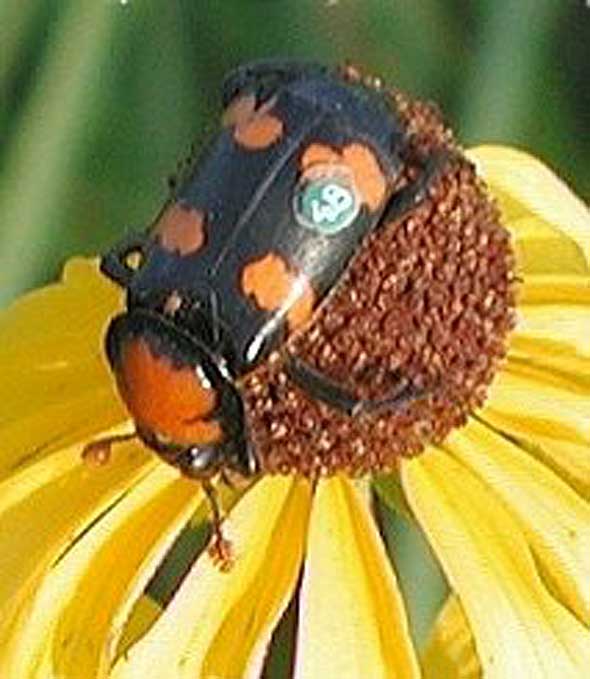
Burying beetle. Image courtesy Wikimedia Commons.
Romance starts with a caress for some, for others it takes a carcass.
Valentine’s Day is approaching and it is time to consider the admirable love life of the endangered American burying beetle.
Unlike most insects, both parents work together and nurse their young in a close relationship that usually starts with a dead bird or mammal.
“It isn’t a very romantic setting, but to these beetles it’s true love,” the Nature Conservancy says in its newsletter.
More love is needed.
In the 19th century, the bug was found in 35 eastern and central states, by the 20th century it was in only a few states and in 1989 it was declared endangered nationwide.
Missouri last summer introduced about 300 pairs of zoo-bred beetles at the Wah-Kon-Tah Prairie north of El Dorado Springs.
The conservancy newsletter documents the habits of a vanishing species:
The black and orange bugs up to 1½ inches long are strong fliers that can detect a carcass from up to two miles away within an hour of the animal’s death.
They move carrion up to 200 times their body weight and take it to a prime location. “Laying on their backs and using their legs like conveyor belts” they bury it, removing fur, feathers or scales and covering it with antimicrobial and antifungal secretions.
The female lays eggs on or near it and “a few days later, white worm-like bundles of joy emerge.”
The beetles make wing noises to call the larvae, feed them regurgitated meat and stay with them until they begin to pupate.
Experts say many factors probably contributed to the decline of the monogamous insects. They range from the extinction of passenger pigeon in the early 20th century, which was a favorite carcass, to habitat loss, artificial lighting and reduced availability of proper carrion.
Over the next five years, the newsletter says, hundreds more pairs of beetles will be brought to the Missouri prairie.
“Each pair is placed with a carcass and covered with a protective screen to keep out predators,” it said. “The site is continually monitored to gauge its suitability for the beetles.”
Their mating season starts in early summer, and they will have matchmakers working for them.



Who’s talking